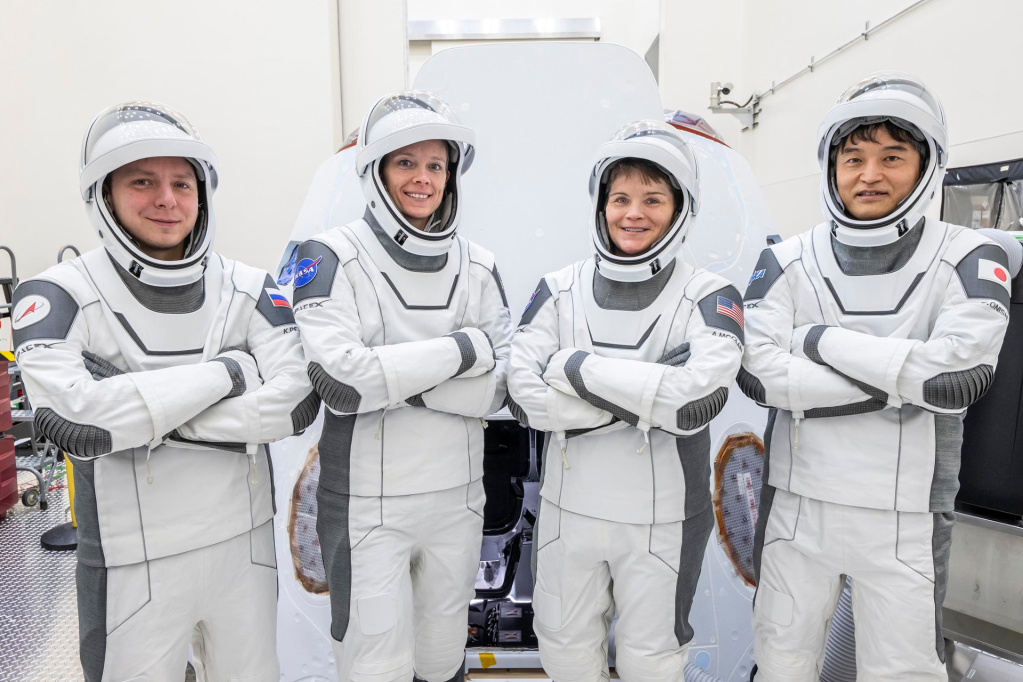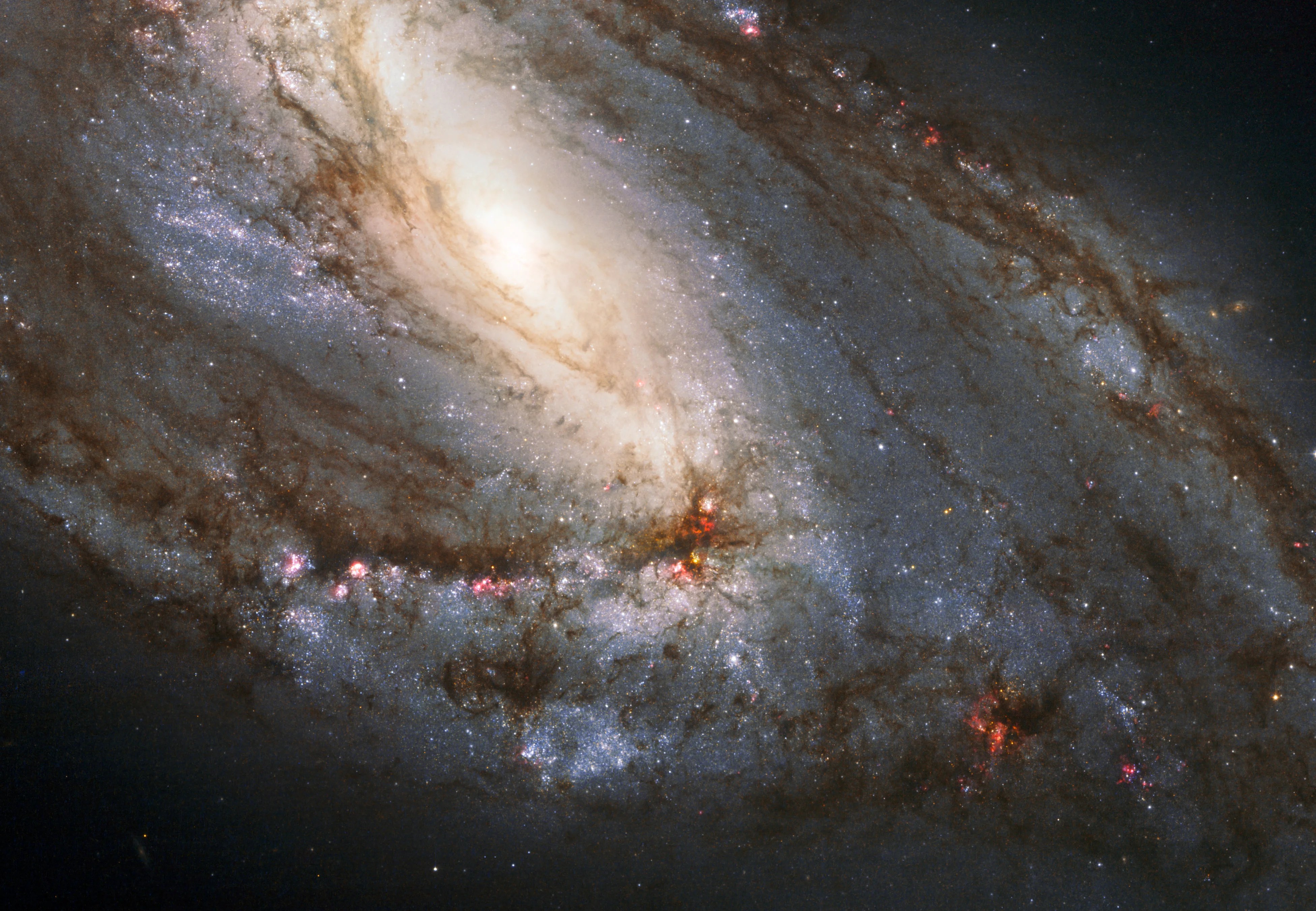Space shuttle Columbia arrived on Launch Pad 39A on Aug. 31, 1981, where ground crews prepared it for its second flight into space on the STS-2 mission. In September, astronauts Joe H. Engle and Richard H. Truly participated in a countdown demonstration test and engineers successfully filled the shuttle’s external tank in a practice test. Following an oxidizer spill that resulted in hundreds of thermal protection system tiles requiring replacement on the nose of the orbiter, managers delayed the planned Oct. 9 launch of STS-2 by one month to allow time for technicians to clean up the spill and replace the lost tiles. Engle and Truly continued to conduct simulations to prepare for their November 1981 launch.
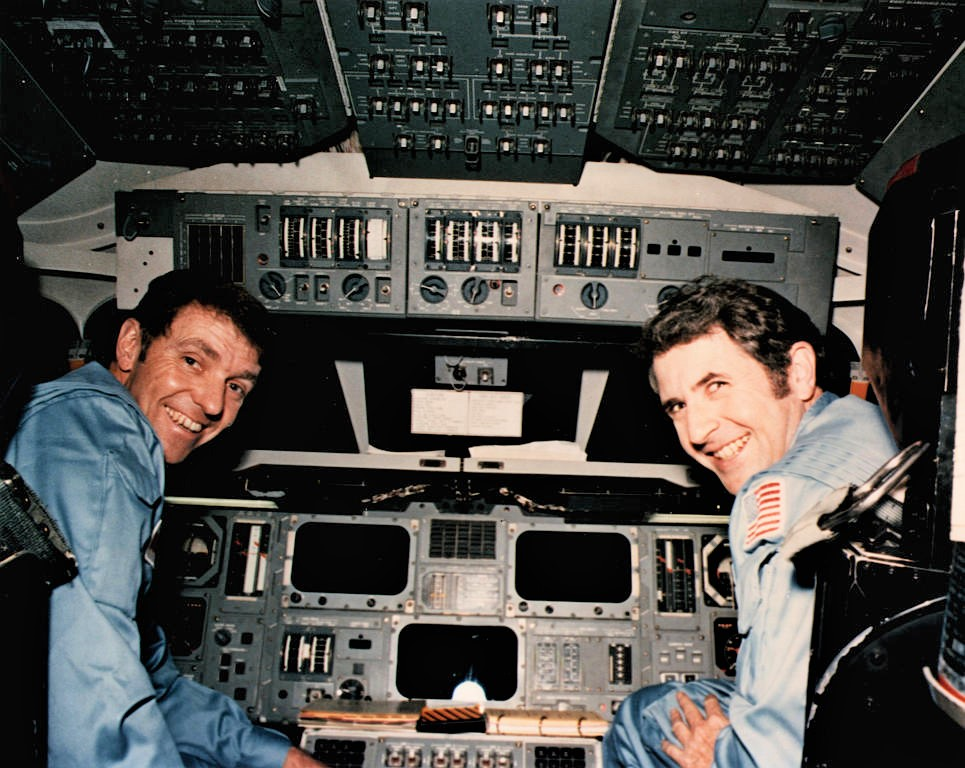
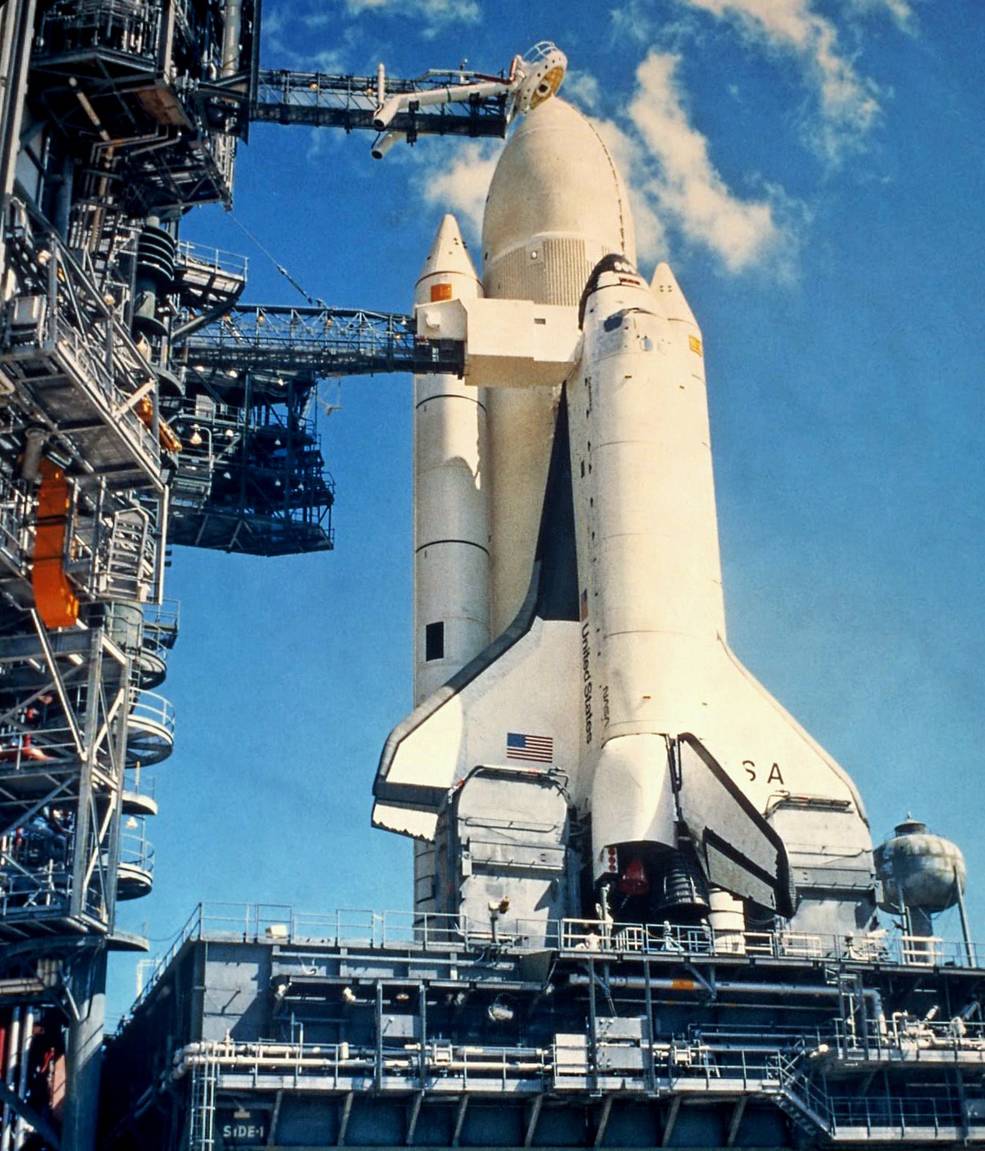
Left: STS-2 astronauts Joe H. Engle, left, and Richard H. Truly in the Motion Base Simulator at NASA’s Johnson Space Center in Houston. Right: Space shuttle Columbia on Launch Pad 39A at NASA’s Kennedy Space Center in Florida.
To prepare for its second mission into space, engineers prepared space shuttle Columbia at Launch Pad 39A. Preflight processing of Columbia, including a countdown demonstration test, essentially a full dress rehearsal for the actual countdown in which Engle and Truly sat in the spacecraft’s cockpit as if on launch day, and a practice loading of super-cold liquid hydrogen and liquid oxygen into the external tank, was proceeding normally. However, on Sept. 22, during fueling of Columbia’s starboard Forward Reaction Control System (FRCS) — a set of thrusters located on the vehicle’s nose — about three gallons of highly toxic and corrosive nitrogen tetroxide oxidizer spilled onto the spacecraft. The oxidizer seeped between the tiles of the thermal protection system, essentially melting the glue that held them in place. Approximately 370 tiles either fell off on their own or needed to be removed to clean the area of any residual oxidizer.
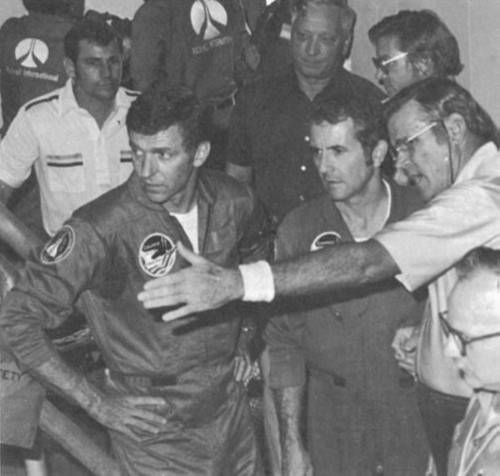
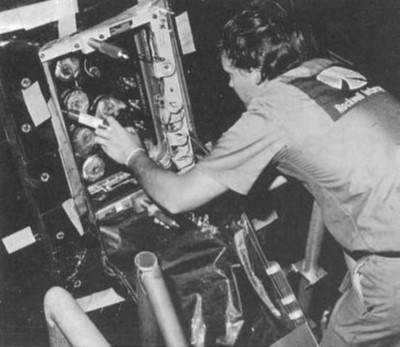
Left: At NASA’s Kennedy Space Center in Florida, Launch Director George F. Page discusses ongoing maintenance work on space shuttle Columbia with STS-2 astronauts Joe H. Engle, left, and Richard H. Truly. Right: Following cleanup of an oxidizer spill, a technician works on space shuttle Columbia’s Forward Reaction Control System prior to refueling.
By Sept. 30, engineers had completed cleaning the FRCS module of the spilled oxidizer and were replacing tiles at the rate of about 30 per day. They completed the work by mid-October to replace all the missing tiles. During the fault analysis of the spill, engineers found deposits of iron nitrate on quick disconnect valves, requiring workers to filter the oxidizer before reloading it into the FRCS tank. As an added precaution, engineers also drained, filtered, and reloaded the nearly 15,000 pounds of nitrogen tetroxide oxidizer in the shuttle’s two Orbital Maneuvering System pods to prevent any buildup of iron oxide deposits. The extra work led shuttle program managers to delay the planned launch of STS-2 from Oct. 9 to Nov. 4. Engle and Truly used the additional time to practice various phases of their mission in flight simulators at NASA’s Johnson Space Center (JSC) in Houston.
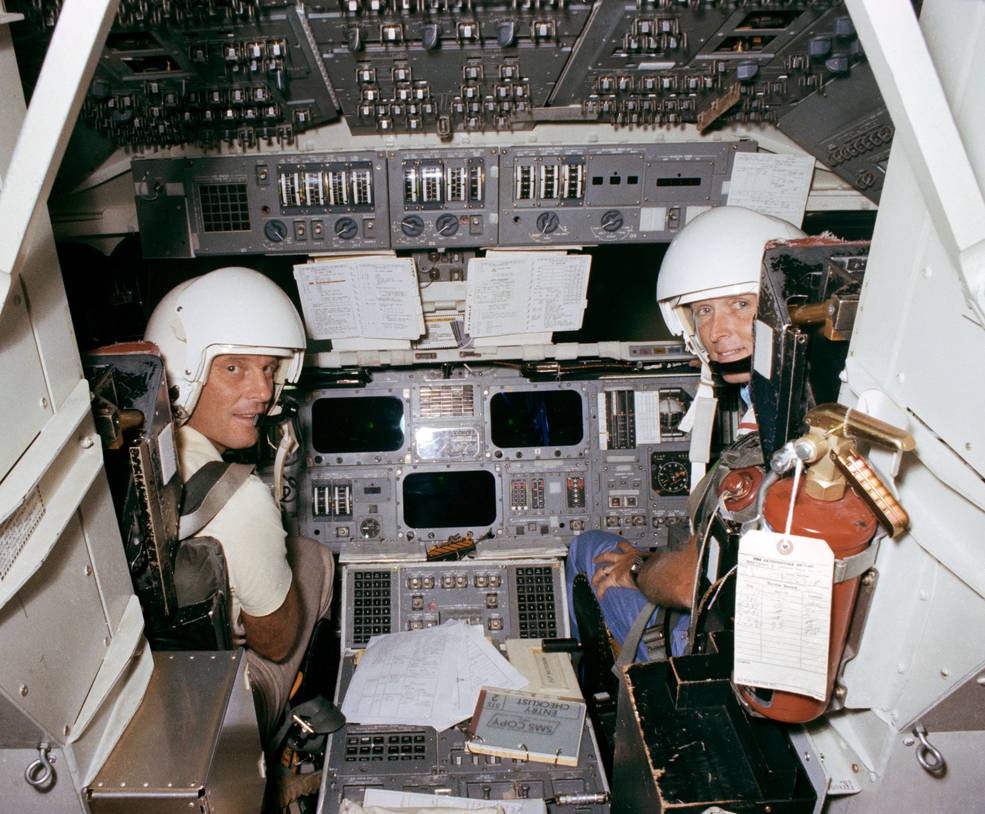
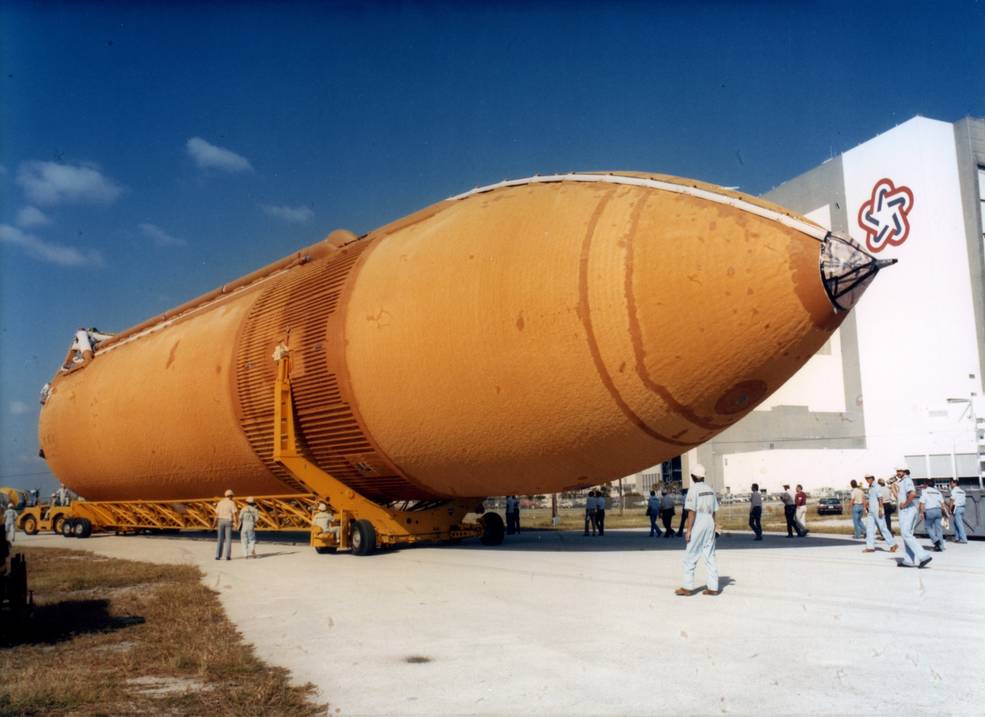
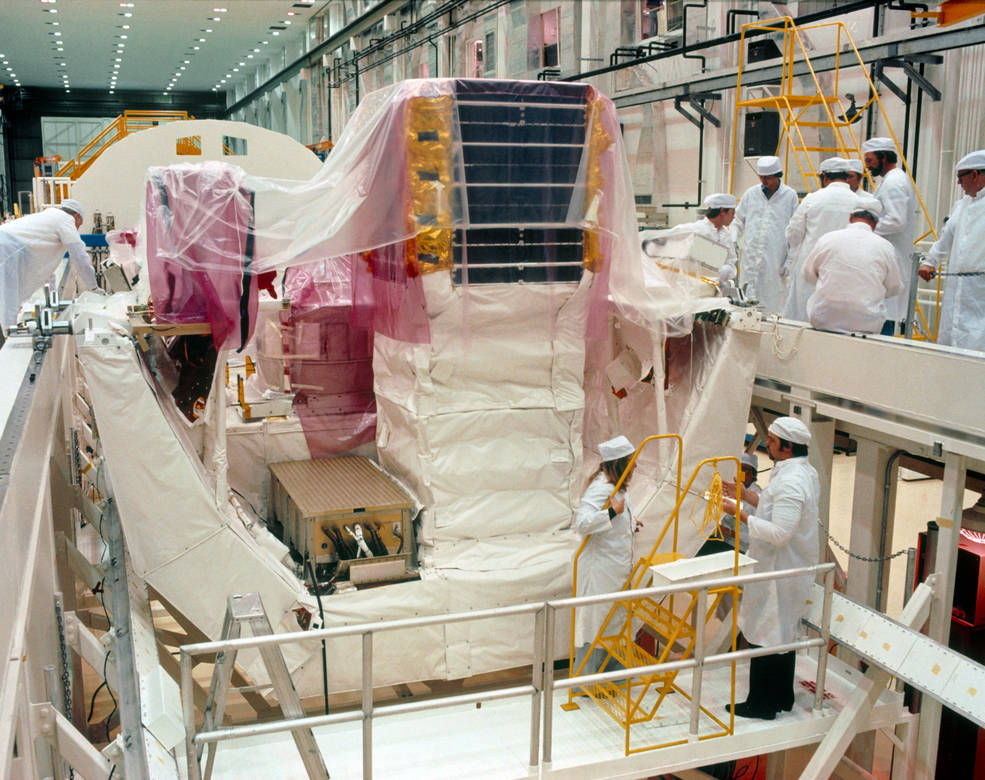
Left: STS-3 astronauts Jack R. Lousma, left, and C. Gordon Fullerton in a shuttle flight simulator at NASA’s Johnson Space Center in Houston. Middle: The orange external tank for STS-3 arrives at NASA’s Kennedy Space Center in Florida. Right: Engineers test the Office of Space Science-1 payload for STS-3.
As work progressed to ready Columbia for its second trip into space, activities for its third mission, STS-3 planned for a March 1982 launch, were already underway. The crew of Jack R. Lousma and C. Gordon Fullerton practiced their mission in JSC’s flight simulators. At KSC, the external tank for STS-3 arrived on Oct. 5, 1981, remarkable by its orange color compared to the white STS-1 and STS-2 tanks. Managers elected to no longer paint the external tanks beginning with STS-3, saving about 600 pounds that could be used for additional upmass capability. Elsewhere at KSC, engineers prepared the Office of Space Science-1 payload for its flight on STS-3.
To be continued…
World events in October 1981:
October 1 – The first cellular telephone network is inaugurated in Sweden.
October 4 – The Meadowlands Arena opens in New Jersey.
October 7 – Hosni Mubarak becomes acting President of Egypt, following the assassination of President Anwar Sadat.
October 11 – Unknown American rocker Prince opens for The Rolling Stones at their concert in the Los Angeles Coliseum.
October 11 – The Super Chicken III, piloted by John Shoecroft and Fred Gorrell, becomes the first balloon to cross the United States without stopping.
October 21 – U.S. patent is granted for “Incoming Call Identification Arrangement,” more commonly known as Caller ID.
October 23 – The Apollo 9 Lunar Module Spider’s ascent stage, in orbit since March 1969, burns up on reentry in the Earth’s atmosphere.
October 30 – The Soviet Union launches Venera 13 on a mission to Venus, where it soft landed on March 1, 1982 and returned the first color pictures from the planet’s surface.







